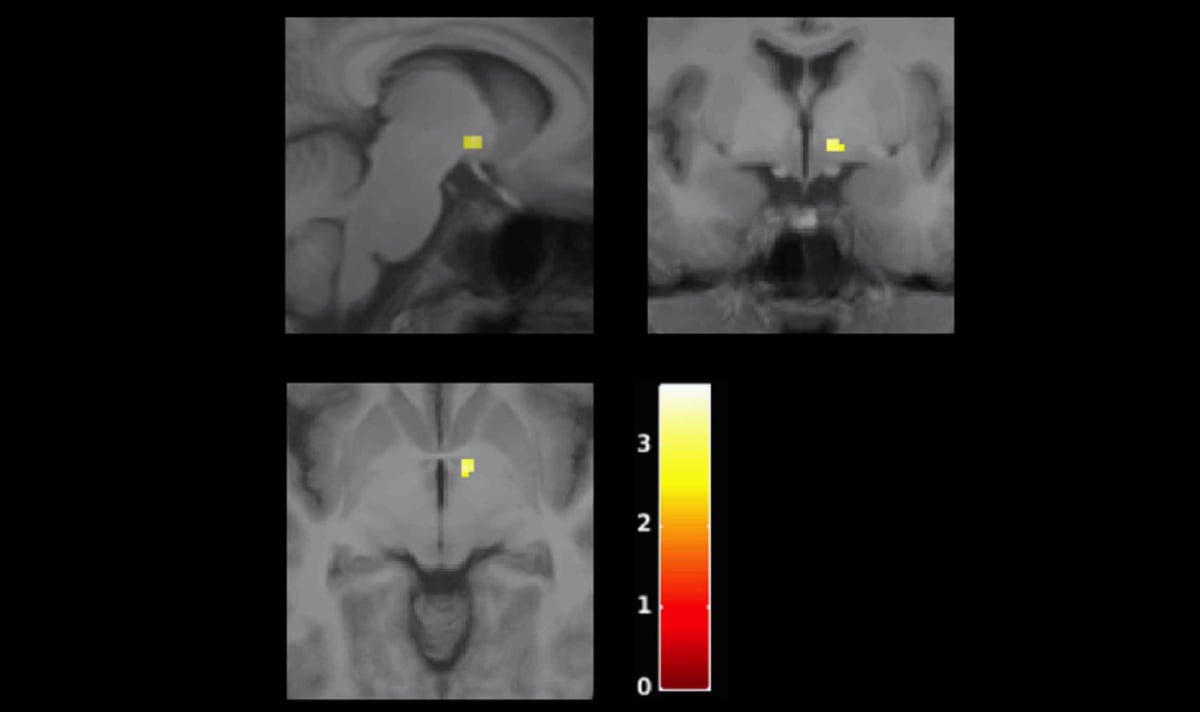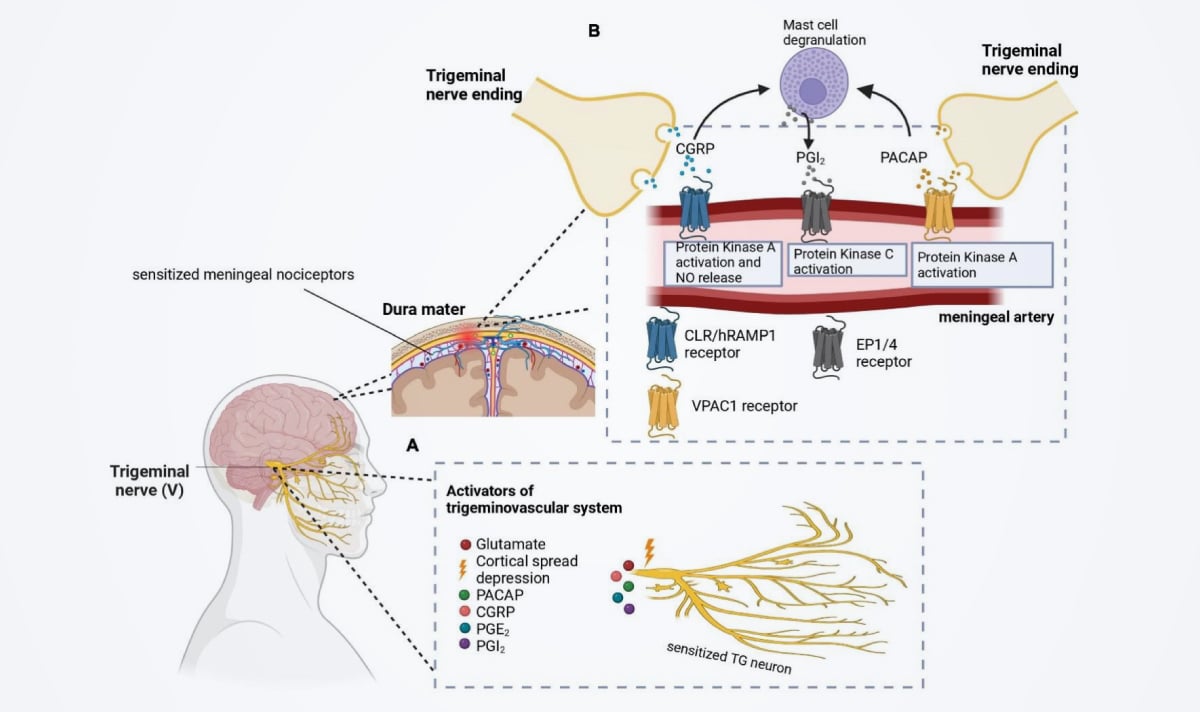Migraine is a type of headache disorder that is complex and has multiple factors that can trigger symptoms. Although the exact cause is currently unknown, studies and research have shown that migraine is related to abnormal brain functions in several areas.
What factors cause migraines?
Genetic factors play a significant role in making the brain more sensitive to stimuli than usual. When the brain is stimulated by external factors such as sudden weather changes (hot, cold, rain), sunlight, loud sounds, or internal body factors such as hormonal changes during menstrual cycles, lack of sufficient sleep, stress, or fasting, these factors can disrupt brain function and cause migraines.
Which part of the brain causes migraines?
The key brain part involved in migraines is the hypothalamus (Hypothalamus) Studies have shown that the hypothalamus can malfunction up to 48 hours before the migraine headache occurs. This stage is called Prodrome Symptoms, including fatigue, neck stiffness, nausea, mood swings, poor concentration, frequent yawning, drowsiness, or cravings for certain foods.

Image depicting the hypothalamus’s function before migraine headaches.
What process causes migraines?
The process causing migraines begins with signaling from the hypothalamus to the brain stem, then to the fifth cranial nerve, which primarily supplies the head and face areas. When these nerve endings are stimulated, substances like CGRP (Calcitonin Gene – Related Peptide) and PACAP (Pituitary Adenylate Cyclase – Activating Polypeptide) are released around the nerve endings in the brain’s blood vessels, causing inflammation and dilation of blood vessels, as well as increasing pain signals.
Pain signals from the fifth cranial nerve end are sent back to the brain’s pain recognition area, resulting in headache. Additionally, pain signals can be sent to the neck area through the upper neck nerves, causing neck stiffness, and they may spread to other brain areas, leading to abnormalities in those brain parts, such as light sensitivity, sound sensitivity, slow thinking, or poor memory.

Image showing the release of CGRP and PACAP from Trigeminal nerve endings causing inflammation and dilation of blood vessels, as well as pain signals.
How important is it to see a doctor for migraines?
Migraines are complex and significantly impact the quality of life for patients. Understanding the causes and managing migraine symptoms is crucial to help patients handle this condition effectively. Consulting a doctor and following treatment recommendations is essential for controlling and reducing migraines in daily life.
Specialist doctor in migraine treatment
Dr. Kiratikorn Vongvaivanich Neurologist, Bangkok International Hospital Hospital for Bones and Brain
Hospital specializing in migraine treatment
Brain and Neurological Center, Bangkok International Hospital Hospital for Bones and Brain, ready to provide migraine treatment with a specialized medical team, including multi-disciplinary doctors with expertise and advanced treatment technology to ensure patients live quality lives every day.
Reference
- 1. Grangeon L, Lange KS, Waliszewska-Prosół M, et al. Genetics of migraine: where are we now? J Headache Pain. 2023;24(1):12. doi:10.1186/s10194-023-01547-8
- 2. Gollion C, De Icco R, Dodick DW, Ashina H. The premonitory phase of migraine is due to hypothalamic dysfunction: revisiting the evidence. J Headache Pain. 2022;23(1):158. doi:10.1186/s10194-022-01518-5
- 3. Noseda R, Jakubowski M, Kainz V, Borsook D, Burstein R. Cortical Projections of Functionally Identified Thalamic Trigeminovascular Neurons: Implications for Migraine Headache and Its Associated Symptoms. J Neurosci. 2011;31(40):14204-14217. doi:10.1523/JNEUROSCI.3285-11.2011
- 4. Schulte LH, Mehnert J, May A. Longitudinal Neuroimaging over 30 Days: Temporal Characteristics of Migraine. Annals of Neurology. 2020;87(4):646-651. doi:10.1002/ana.25697
- 5. Frimpong-Manson K, Ortiz YT, McMahon LR, Wilkerson JL. Advances in understanding migraine pathophysiology: a bench to bedside review of research insights and therapeutics. Front Mol Neurosci. 2024;17:1355281. doi:10.3389/fnmol.2024.1355281
